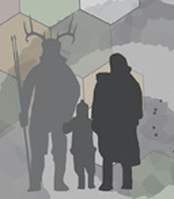"Yes, definitely, submit your article, we will publish it."
|
At the end of yesterday's blog post about Ancient American and the non-sword article in the latest issue, I wondered aloud if the magazine would publish a piece by me about the swords. This morning I emailed Wayne May (publisher) to ask him that very question and got a speedy response: "Yes, definitely, submit your article, we will publish it." With some quick correspondence, I established that it should be no longer than about 2000-3000 words and that I would be allowed to publish my article on my own website 30 days after the issue is released. The deadline to make the September issue is August 1. I'm hoping to make that deadline even given everything that's going on -- I've already written who-in-the-hell-knows-how-many words about the swords, so it shouldn't be that tough. I'll keep you posted.
I'll break the suspense and answer the question right away with a quote from page five of the latest issue: "The purpose of Ancient American is to describe the true prehistory of the American continent, regardless of presently fashionable belief systems, and provide a public forum for certified experts and non-professionals alike to freely express their views without fear or favor." My experience with Ancient American has been limited. My wife bought me an issue about a year and a half ago that had a cover story about a "giant skeleton" from New York (I wrote about it here), and I bought another issue last spring while I was trying to track down the story of the "oxhide ingot" from Michigan. I bought the latest issue (111) this morning because it has the "Roman sword" on the cover and an article titled "The Cursed Oak Island Artifacts" by J. Hutton Pulitzer. I skimmed through the article and didn't see anything about the sword. If you can't get enough of Pulitzer's sour grapes "tech-mogul-turned-explorer-turned-warrior-for-truth" puffery, then by all means you should spend your own $4.95 to read about the latitudes and longitudes of where he takes phone calls from important people who think he's awesome. Otherwise, save your money. As I flipped through the rest of the pdf, I couldn't help but wonder about the audience for this publication. The first "news" piece in this issue ("Traces Of A 9,000-Year-Old Lost Unknown Civilization Discovered in Lake Huron, Michigan") is a word-for-word reprinting of a piece that has been available free online at the Message To Eagle website since August of 2014. Well, it's not quite word-for-word, as the printed copy that was cut-and-pasted into the magazine includes one of the photo captions out-of-place in the text and the phrase "Lake Huron lost civilization" (presumably a page header) inserted into the narrative twice. My colleagues at Michigan who are doing this work may be surprised to learn that they're uncovering a "lost, unknown civilization" rather than the remains hunting blinds for driving caribou.
Reading on in this issue, you'll find a story about a rock from Michigan that was somehow determined by Wayne May (the publisher) to be an idol of a human head dating to the period 1000 BC - AD 400, Pulitzer's piece, an article about bison that was also reprinted straight from content that's freely accessible online, a review of the almost-forty-year-old Brad Steiger book Worlds Before Our Own by former Nazi Frank Joseph, a misleading article about the Kennewick Man controversy, some advertisements for books . . . finally there are a few pieces which may actually contain some content related to original scholarship. Since I paid my $4.95, I'll actually read through those and see if there's anything I'm interested in writing about. Ancient American has been in print since 1993. As far as I can tell, much of the content has been directed at promoting just about anything that fits within a hyper-diffusionist paradigm: everyone, everywhere, all the time. The great irony in how the magazine bills itself (quoted above) is that it's really impossible to both "describe the true prehistory" and allow all ideas equal weight "without fear or favor." Not all ideas about prehistory can be "true," of course, so how do you separate the credible from the non-credible within some kind of "safe space" where we all pledge not to think critically? You can't. An unwillingness to try to falsify anything means you have to accept everything and somehow fit it all into a narrative. When you're mired only on the induction side of the inductive-deductive process (trying to concoct a story to explain the "facts" that you've got in front you), you really run into a problem if you have no means or desire to winnow out good pieces of evidence from the garbage (see this post for an expanded discussion). So paint me a picture of the "true prehistory" of North America that incorporates everyone's bad ideas, misinterpretations, and fraudulent artifacts. I'd like to see that. The stated purpose of Ancient American makes me wonder if the magazine would be amenable to a Fake Hercules Sword article written by me? Or perhaps a point-counterpoint where Pulitzer and I can discuss the key issues around the sword(s). If you really want to get beyond "fashionable belief systems," you might want to try embracing the self-correcting nature of science. It tends to produce some pretty good results if you let it. And you may also want to invest in some additional proofreading. Swordgate afficionados will remember when, in the midst of the giant "Roman sword" bellyflop, J. Hutton Pulitzer removed or made inaccessible his websites for the books Solomon's Secret and Commodus's Secret (it was one of my top ten great moments in Swordgate history). Solomon's Secret had been available for pre-order (meaning you pay for the book but you don't get it right away) since at least November of 2014. The goal posts for publishing the book(s) have been moved back several times since then. The only website I can find for Solomon's Secret now is this Facebook page, which claims the book will be coming out this July: This is not the only time I've seen the "how do we get a refund" question posed but a customer who has run low on patience. All along, Pulitzer has promised that refund requests will be honored. This is a quote from the now-invisible Solomon's Secret website: "As far as orders, it is an automated process, and if you decide not to wait, it is an automated 100% guaranteed return process and, you can go back to order and cancel, and it will be process and then the one reserved for you, just becomes someone else’s gain." Another unsatisfied Solomon's Secret pre-order customer recently posted a complaint on the Ripoff Report website: "Pre-ordered Solomon's Secret book. Book has been postponed and postponed while the "author" self-publishes all sorts of other stuff. He won't respond or acknowledge inquires about status of book or refund." There is a single rebuttal to the complaint, filed by someone claiming to be Pulitzer: I cannot find any evidence that the sales of Solomon's Secret are being handled by Amazon. When I go to the "Commander Pulitzer" author page, I get a list of 345 treasure hunting books, the most recent of which were published in March of 2014. Solomon's Secret is nowhere to be found.
I'd love to see a copy of a receipt for ordering this book, if you've got one. Email it to me at aawhite@mailbox.sc.edu. You can remain anonymous if you like. Anyone want to gamble on whether not you'll get your copy of Solomon's Secret (and Commodus's Secret) in July? I know where I'd put my money. Thanks to Mike Morgan for posting the link to the Ripoff Report on the Fake Hercules Swords group on Facebook. 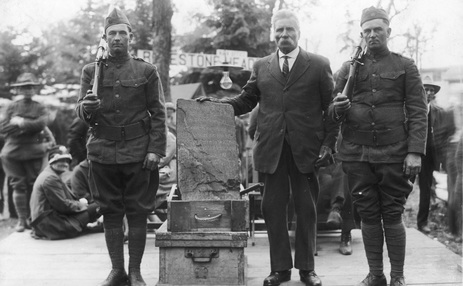 Olaf Ohman and the Kensington Rune Stone in 1929. Olaf Ohman and the Kensington Rune Stone in 1929. This is a quick follow-up to a blog post from earlier today about the Faram Research Foundation's take on the Kensington Rune Stone (KRS). I was curious about the idea that the runes on the stone were carved by two different people. In the comments to that post, Joe Scales pointed me to this website which contains a link to a 1976 article in Minnesota History titled "The Case of the Gran Tapes" that sheds some light on that issue. The Minnesota History article transcribes a 1967 interview with Walter Gran, son of John P. Gran, and Walter Gran's sister (Anna Josephine) and nephew. John P. Gran was a neighbor of Olaf Ohman, the man who unearthed the KRS in 1898. As described in the article (pg. 153), "The pertinent information as to the inscription derives from conversations in the late 1920s between Walter and his father, who was ill at the time and convinced that he was dying. The evidence thus has the quality of a deathbed statement." Here is a bit of the interview relevant to the issue of right- and left-handed carvers of the KRS: "Nephew. Well now, did Ohman ever admit that be did this? Walter. No, Ohman didn't. Well, you see, then as time went on. Papa was getting older and older, and I was in Canada. Then I got a telegram, I think it was Art [his brother, Arthur Gran] who sent me a telegram, if you want to see Dad alive, you better come right away. . . . Let me see, when 1 came back, what year was that now? I believe it was in 1926 or '27, I ain't so sure, one of them years. I come up and seen Dad then, and Dad was glad to see me. He was laying in bed but he was pretty weak. Well, then of course we talked about what I was doing. . . Yeah, well, then he got to talking. He brought up about the rune stone, then again. He said to me, you should go to see Ohman now, he said, and visit Ohman. And then he says, you find out how we made the rune stone, he says. He says, you know it is false, he says. You know, he said to me, just like it was important that it was so. And I says Yeah. . . . Anna Josephine. You see Papa was left-handed . . . and Ohman was right-handed. Walter. You know I seen that sculpture [rune stone] had been examined and it said it had been two men working on that stone and because one was a left-handed man and one a right-handed man. Well, that fitted in for Dad and Ohman, but then I thought, by God it is something isn't it? . . ." That's the story from Walter Gran's side. Needless to say, supporters of the KRS don't accept Gran's report of a 40-year-old confession. Here is the take from one website:
"1972-1975 - The “Deathbed Confession” As strange as the events that had swirled around the rune stone till now had been, it got even stranger. Walter Gran was the son of John Gran who lived at Kensington. Walter claimed in an interview that his father, while dying, had told him that the rune stone was a fake and that he and Olof Ohman had carved the inscription. Even though no-one around Kensington believed Gran and everyone spoke of his tendency to “exaggerate,” the story caught on. A subsequent interview with Gran showed him to not have a coherent story. A jury would never have bought it, but there was no jury. The rune stone and Olof were convicted of fraud without a trial. The “deathbed confession” suited the anti-stone atmosphere of the times and fit the template of hoax that the hungry media had adopted." Anyone know where I can find that "subsequent interview"? A comment by Arthur Faram on my last post about the Kensington Rune Stone led me to the website of the Faram Research Foundation. On his site, Faram provides a list of archaeological/historical "mysteries" that he claims to have solved through the application of "geoglyphology." The Kensington Rune Stone (KRS) is one of them. Here is what Faram wrote on my blog: The KRS has it's own section on Faram's site. `The short version of Faram's claim is that the KRS is an encrypted survey document that describes a pre-Columbian European claim to North America. Faram keys in on the numbers in the stone's text, interpreting them in terms of distances and orientations to various important locations. I'm not sure if/how he attempts to justify his assumptions about what the numbers mean (in one stanza, for example, the phrase "10 men" is decoded as '10 miles,' and in another it's decoded as "a 110 degree radial"). Two parts of the claim interested me. One was Faram's suggestion that the runes on the stone were carved by two different people: "Upon submitting the runestone to a handwriting analysis it was determined that the writing had been done by two different persons. The first five rows were done by one person and the last four rows, and side, were done by a second person. The first tip off is the slant of the work. If you will check the slant in the pictures above you will notice a distinct difference from one persons writing to the other. Another tip off is the way the letters are formed. For example; the first person brings the right leg of his "R" all the way down to the baseline, the second person stops short of the baseline. As is common when someone is attempting to copy another person’s writing, the first half of the sixth line is similar to the first five lines. But as is always the case, the copier gets tired of trying to copy the other person’s style and towards the end of the first line and thereafter he reverts back to his own style." My knowledge of the KRS and the main claims about it is not exhaustive, so I don't know if this is an original idea or not. Knowing if the stone was carved by two different people could be relevant to understanding the circumstances under which the stone was created. If the two parts of the text were created at two different times hundreds of years apart (as Faram claims), for example, one would expect the time difference would be detectable based on differences in the physical weathering of the carvings. If there were two carvers roughly contemporary, however, and the stone can be shown to be a nineteenth century creation, then we're looking for at least two hoaxers rather than one (Update 6/18/2016: this short post discusses the issue of right- and left-handed carvers discussed in a 1976 Minnesota History article about the Gran tapes). Although I can't claim to follow Faram's logic in decoding the stone in terms of distance and orientation directions, it was simple enough to evaluate his central claim that the KRS describes "new boundaries for the North American Territory for which Inspiration Peak is the central survey marker." Faram states that the number "1362" on the stone, in addition to recording the year the stone was carved, indicates that "Inspiration Peak [Minnesota] was exactly 1362 miles from the three corners of what would later become the United States." Faram provides latitudes and longitudes for both Inspiration Peak and the "three corners," making it simple enough to perform distance calculations. Here are the results that I got using this online tool: None of the distances between the pairs of coordinates he provides is "exactly" 1362 miles, and the distances to the NE and S points aren't even close in pre-1592 miles (i.e., when a mile was defined as 5,000 feet rather than 5,280 feet). The claim that Inspiration Peak, MN, is an equidistant 1362 miles from those three boundaries of the United States is demonstrably false.
The issue of why the length of the mile was changed from 5,000 feet to 5,280 feet in the late 1500's is an interesting one (you can read one take on it here and another here). Faram asks if the change was made "to mask all the measurements done before" 1592, hinting at a mapping conspiracy that could be easily overcome by a change in division. One of the strangest ideas embedded in Faram's treatment of the KRS is that the number "1362" stands for both the year the stone was created and the distance measurement to each of the three corners of of the territory. Peculiar on its own (in 1362 a party journeyed to a point 1362 miles equidistant from opposing coasts and carved on a rock?), it becomes bizarre when you factor in Faram's claim that the lower portion of the writing, including the number "1362," was an amendment to the stone that was actually added after 1519. So the original stone was placed 1362 miles from the opposing coasts in 1362, but the number "1362" was not added until much later? And, coincidentally, the third (southern) point that was added to the claim was also 1362 miles from Inspiration Peak, even though it was an amendment? What good would the original marker have been without the date/distance recorded on it? And how would the carvers in 1362 have known that they needed to place the stone in a location 1362 miles from a point on the southern boundary of the territory which had not yet been defined? You almost need to invoke time travel to make the claim reasonable. But these gymnastics don't matter, of course, since Inspiration Peak is not actually 1362 miles from the points that Faram specifies. As usual, let me know if I've gotten anything wrong. I'm happy to fix errors. Once I'm awake at 3 or 4 o'clock in the morning it's difficult for me to get back to sleep. So you can thank one of my kids for this blog post: an unwelcome early morning wake-up provided me an opportunity to start doing some homework on the Kensington Rune Stone (KRS). We'll be discussing the history of analysis and interpretation of the stone in my Forbidden Archaeology class this fall during a unit on claims for pre-Colmbian transoceanic contact. If you've been following along at home, you know that Scott Wolter, a prominent advocate of the KRS, has agreed to participate in my class. I'd like to get him here to interact with my students in person, so I've started raising some travel funds: click here to contribute if you'd like to help make this happen. Debate about the authenticity and potential implications of the KRS has gone on semi-continuously since the stone was first reported in 1898 (you can read reviews of the history of the debate here and here, among other places). As I'm in the habit of using my blog to help me organize my research, I'll probably write posts as I work my way through the debate. This morning I read through the 1910 article by Hjalmar Rued Holand in The Journal of American History (Volume 4, pp. 165-184, available here). The first thing that struck me was the title: How could the KRS be an authentic European artifact and a "native" document? The last time I checked, the term "native" referred to a geographical association by birth (a person born in a place is "native" to that place). The immediate implication of Holand's word choice, I think, is that he thinks the KRS somehow legitimizes the idea that people of Norse descent are "native" to the area by virtue of a fourteenth century Norse expedition that he believes carved the stone and left it in Minnesota. It's possible I missed some nuance, as I read the paper quickly. The second thing that struck me is the similarity between the debates that were taking place in the first decade of the twentieth century and the debates that are still taking place today. Then, as now, arguments about the stone's authenticity revolved around three main bullet points:
Holand considers each of these in varying amounts of detail, concluding without reservation that the stone is authentic. The arguments about the runes and the geology are strikingly similar to recent treatments. Here is what he says about the geology (p. 179): "Another proof is the geological evidence shown in the weathering of the inscription , and in the physical changes in the region where the stone was found. This stone, being a Greywacke, is exceedingly hard, and decays extremely slowly, as is shown by the pronounced glacial markings on the back of the stone made several thousand years ago. Notwithstanding this durability the main part of the inscription presents the same ancient, mellow and weathered appearance as the untouched face of the stone. Some of the runes, however, encroach upon a calcareous incrustation which covers part of the stone. In this softer portion the characters are so worn down as to be almost unreadable. In marked contrast to these are the characters upon the edge of the stone which were scratched, when the stone was found, with a nail to dig out the dirt. After 11 1/2 years' exposure to the elements, these characters upon the edge of the stone still appear white and fresh as if cut today. This is an excellent illustration of how very slowly this hard rock decomposes. In order to have arrived at the weathered appearance of the main part of this inscription and the worn down conditions of the characters in the calcareous deposit, this inscription must have been made many hundred years ago." As Scott Wolter has demonstrated, consideration of the runes and geology of the stone still provide grounds for discussion. Given the length of the debate about these aspects of the stone, however, I think it's reasonable to wonder if analysis of the intrinsic qualities of this single artifact will ever resolve to everyone's satisfaction the question of whether the KRS is a hoax or an authentic artifact related to a fourteenth century European expedition into the interior of North America.
As an archaeologist, the "improbability" question is of greater interest to me than questions of runes or geology. Human behavior leaves material traces. If the KRS was produced by a fourteenth century European expedition (Holand goes so far as to specify who he thinks led the expedition), I would expect that there would be some tangible traces of that expedition in addition to a carved stone (remains of campsites? European goods incorporated into Native American economies?). Those traces are not likely to be easy to find, however: we can anticipate that the residues left by a small, rapidly moving expedition would be very difficult to locate. For the sake of comparison, consider the archaeology of early Spanish attempts to explore and colonize the Southeast. Hernando De Soto journeyed through the southeast in the mid-1500's with a small medieval army of about 600 people along with wagons, pigs, and horses. De Soto's group (much larger, I think, than the party that most people envision would have been associated with a proposed Norse exploration of the American interior) left a very faint archaeological signature. The location of the short-lived coastal colony of San Miguel de Gualdape, occupied by 500 people for a few months in 1526-1527, has yet to be identified. The Mississippian village of Cofitachequi, visited by the De Soto expedition in 1540 and the Juan Pardo expedition in the 1560's, has yet to be identified based on positive material evidence (although it almost has to be the Mulberry site). The location of Fort San Juan, the first interior Spanish settlement in the interior of North America, was only recently confirmed to be at the Berry site in North Carolina. While the traces left by Spanish expeditions are light, they aren't invisible. Is it possible that definitive evidence of a Norse expedition into the interior (other than the KRS) would be so light as to fly under the radar despite a century of scrutiny? It's a fair question. I admit that my first reaction as I start to learn more about the KRS is a bit of disappointment: has the debate over this artifact really remained so static over the last 100 years? I hope not. I also find myself asking what else there is to go on at this point. Despite what the popular media tell us, archaeology is not primarily a game of singular "discoveries" like the KRS. It's about patterns, multiple lines of evidence, and putting in the hard work to understand how the past human behaviors we want to understand relate to the material traces we can observe and study. If the KRS is genuine, it's hinting at a pretty interesting story. But it won't be the only piece of evidence that can tell the story. With the main points of argument about the KRS apparently still unresolved after 100 years, I'd spend some effort pursuing other avenues if I was looking for positive evidence of Norse expedition into the interior in 1362. I think Holand's use of "native" hints at the context of his advocacy of the KRS. That doesn't, in and of itself, mean he's wrong about the stone, however. His paper mentions several things I plan to look into further. And so it begins. With 2016 almost half over, it's fair to ask again about the status of the Ancient Artifact Preservation Society's promised report on the evidence for the ancient Roman occupation of Nova Scotia. The original Boston Standard story from December 2015 stated, after all, that the report "is scheduled to be published in full in early 2016." That "early 2016" timeline for publication was confirmed in an Ancient Origins article in January. I also remember being told we'd see the report in the "spring" or "early spring." but I don't have the energy to try to track down those statements.  And it doesn't really matter: as the year nears the halfway mark and the formal beginning of summer approaches, the clock is running down on even the most generous publication timeline. My falsifiable hypothesis is that we will never actually see the promised report (fifteenth of Nevuary, anyone?). I think Pulitzer's timing for pumping the sword story in December of 2015 was driven by his desire to get as much attention as possible prior to the appearance of the item on The Curse of Oak Island in the following January. Ironically, the spotlight he placed on the sword brought to light new data that quickly and fatally undermined his ironclad guarantee that it was a "100 percent confirmed . . . smoking gun" artifact. Within days of the original Boston Standard story, it was obvious to any reasonable person that the "ancient Roman sword from Nova Scotia" was nothing of the sort. Never one to let facts get in the way of a good story, however, Pulitzer has stood by the sword for months and continues to do so. I can't help but think that the enthusiasm for releasing the full report has been significantly diminished, however. With hopes for release of the fabled "white paper" evaporating and the recent documentation of the thirteenth Fake Hercules Sword (and because my kids woke me up at 3:00 a.m. and I couldn't get back to sleep), it seems like a good time to take a look back at some great moments in Swordgate history. These are just a few of my favorites in roughly chronological order.
There were, of course, many other great moments in Swordgate both in terms of the overall story and the personal connections that I made (I didn't mention Peter Guezen's poster series, Killbuck's cartoons, the individuals who lent me their swords for analysis, Pulitzer's bizarre Periscope broadcasts, the great contributions of thinking and data from the readers of this blog, and the interactions I had with numerous people from Nova Scotia and elsewhere who have taken an active interest in the puzzle of the Fake Hercules Swords. I don't know when and if anything like this will happen again, but I won't bet against it. I'm sure there are others besides me who count the whole experience as a good one.
I wasn't planning on writing a blog post today. If I did get around to writing one, it was going to be about sea turtles and coastal hunting-gathering economies. But then I found a link to the story "The Problem with Nephilim-Pigs" (published by SkyWatchTV, which bills itself as performing "Investigations into prophecy, discovery, and the supernatural") as I was going through emails and it seemed important that I pass it on to those of you who, like me, have your antennae up for something other than what you're supposed to be doing on a Friday morning. As a fan of both giants and pigs, I was disappointed to see that the Nephilim-pig story was much less exciting than the headline suggested. It consists of a single paragraph stating that our ability to manipulate the genes of animals is running ahead of our discussions of the ethical issues raised by such behaviors. That's it. There's no direct mention of Nephilim, angels, the End Times, super soldier pigs, or any of that stuff in the actual text. What actually is the problem with Nephilim-pigs? You left me hanging, SkyWatchTV. Yawn. So what was the point? Most of my readers will be unsurprised to learn that the listed author of the piece ("SkyWatch Editor") simply copied, pasted, and rearranged content from a legitimate story, modified the headline, and slapped the mess on a page as "news." The "read more" link takes you to a June 3rd article in Slate titled "The Problem with Super-Muscly Pigs." Here's a side by side comparison: Given all the jibber-jabber circulating in the Nephilim whirlpool about genetic engineering, etc., our friend SkyWatch Editor didn't have to do anything to earn his/her paycheck but crib some technical-sounding sentences from the original and insert "Nephilim" into the headline. Genetic engineering = satanic . . . message sent with no need to expend precious calories producing anything original. Pack up your CopyCat and head home for an early lunch!
I'm sure there's a technical term for this strategy of producing "original" content via copy/paste and a headline change, but I don't know it. So I'll just call it what it is: lazy and deceptive. SkyWatchTV gets an F on this assignment. Please write something original about Nephilim-pigs and resubmit for partial credit. We all knew it would happen at some point, and finally our wait is over: the thirteenth Fake Hercules Sword has finally surfaced! What does that mean? No-one really knows. But with this ominous omen and summer gas prices expected to plummet, it's probably as good a time as any to load your mini-van with weapons, stock up on canned goods, and head for your bunker. News of Sword 13 (the Alejandro Sword) came to us via a comment by Alejandro on this blog post a few days ago while I was on vacation. Thankfully, alert citizen, Spanish speaker, and Friend of #Swordgate Pablo Raw followed up on Alejandro's comment and gathered information and photos about the sword. Thanks to both Pablo and Alejandro - I owe you both a beer (if you've been keeping score at home, you'll know that I now owe Pablo two beers). Here is a portion of Alejandro's account as he emailed it followed by Pablo's translation: "Ésta espada en concreto, me refiero a la famosa espada ceremonial, si bien no era más que una mera reproducción, tenía cierto encanto. La adquirió en un viaje a Italia, en concreto a la ciudad de Pompeya. No puedo precisar si salió de la sección de souvenirs del Museo Arqueológico Nacional de Nápoles, de un vendedor ambulante, o de la misma ciudad Pompeya; pero puedo asegurar que las palabras literales de este buen amigo cuando me la obsequió fueron: “Ya tienes una espada de Pompeya”. De lo que no hay duda alguna es de que esta espada fue adquirida en Italia. Todo esto sucedió hace unos 20 años aproximadamente, la fecha exacta no puedo recordarla, pero aseguro con certeza que llegó a mis manos allá por 1996. Desde entonces luce entre mi colección." "This specific sword, (I’m talking about the ceremonial sword), it was clearly a reproduction, but it had a certain charm to it. He got it on a trip to Italy, specifically in the city of Pompeii. I can’t tell if it came out of the souvenirs store of the National Archaeological Museum of Napoli, a street vendor, or just somewhere in the city of Pompeii, but I can tell that his literal words when he gave it to me where: “Now you own a sword from Pompeii”. There is no doubt that the sword was acquired in Italy. All this happened 20 years ago approximately, the exact date I can’t remember, but I can assure that I got it around 1996. Since then, it is part of my collection." Here are some photos of Sword 13: Sword 13 appears to be a copper alloy sword with a heavy artificial patina that has been worn from the high spots to expose the underlying brass (followers of this blog will remember how the self-proclaimed Commander of the world's best "professional treasure hunting" team misidentified the exposed brass on the Nova Scotia sword as gold). The Hercules figure preserves more detail than the cast iron Design Toscano swords, but appears crudely cast/finished with some prominent mold seams in the areas between the head and arms, some filled-in areas (e.g., to the left of the tail of Hercules' lion skin), and some pits that are not present on the Design Toscano sword (e.g., on the back of Hercules' head). As far as the blade goes, I don't see any of the anomalies used to the define the Type J swords (i.e., the Nova Scotia Sword, the Italian eBay Sword, the Florida Sword, and the France Sword). A side-by-side comparison of Sword 13 with the 3D model of the Italian eBay Sword suggests that the blade of Sword 13 is the shorter of the two. The blade of Sword 13 appears to be shaped like the the blade of the Design Toscano sword, but lacks some of the distinctive characteristics of the Design Toscano example that I have in my office. Where does Sword 13 fit in the grand scheme of Fake Hercules Swords? It looks to me at first glance as if it belongs pretty comfortably with what we're calling Type CS (which includes the Spain Sword, the Florida eBay Sword, and the Cvet Sword). These are copper alloy swords with blades that are shorter than those of the Type J sword and lack the casting anomalies used to define Type J. I have yet to examine any of the Type CS swords first-hand. We have a purchase date and location for the Alejandro sword (1996, Pompeii) that fits pretty nicely with the purchase date and location reported for the Cvet Sword (2004, Pompeii). (Although we never got a good photo of the Benjamin Sword, purchased in 2005 in Pompeii, I suspect it is also a Type CS based on the apparent blade length.) We know that the Type F swords (California and Sonja) were for sale in the 1970's. And we know the Design Toscano swords are still being made today. I think the most reasonable hypothesis is that the Type J swords were probably produced sometime between the 1970's and 1990's, with the Alejandro Swords and the other Type CS swords being a later generation. Maybe something like this: That's just a hypothesis, of course, but one that I think it's consistent with everything we now know. As I wrote back in January, we would expect the hilt dimensions of the Type CS swords to be intermediate between those of the the Type J swords and the Design Toscano swords if Type CS really does fall between the two in a generational copy chain. I think the photos that Alejandro sent are good enough to derive some measurements that I can compare to those I have from other swords. I'll try to do that soon and provide an updated database.
Thanks again, Alejandro and Pablo. Nice work! I spent a few hours today adding links to the Argumentative Archaeologist website that I maintain. I did a tour through the active skeptical websites that I know of, adding links to Jason Colavito's relevant posts from the last couple of months, some podcasts from Archyfantasies, posts by Michael Heiser on his Paleobabble page, a post by Carl Feagans about cranial deformation, some new stuff on the Ancient Aliens Debunked blog, a bunch of posts about Oak Island on the Oak Island Compendium site (those folks have been writing a lot!), some things from this blog, and a few other odds and ends. I also added a new page for Lemuria.
Please let me know about other sites and posts that I should be aware of. Enjoy! |
All views expressed in my blog posts are my own. The views of those that comment are their own. That's how it works.
I reserve the right to take down comments that I deem to be defamatory or harassing. Andy White
Email me: andy.white.zpm@gmail.com Sick of the woo? Want to help keep honest and open dialogue about pseudo-archaeology on the internet? Please consider contributing to Woo War Two.
Follow updates on posts related to giants on the Modern Mythology of Giants page on Facebook.
Archives
January 2024
Categories
All
|

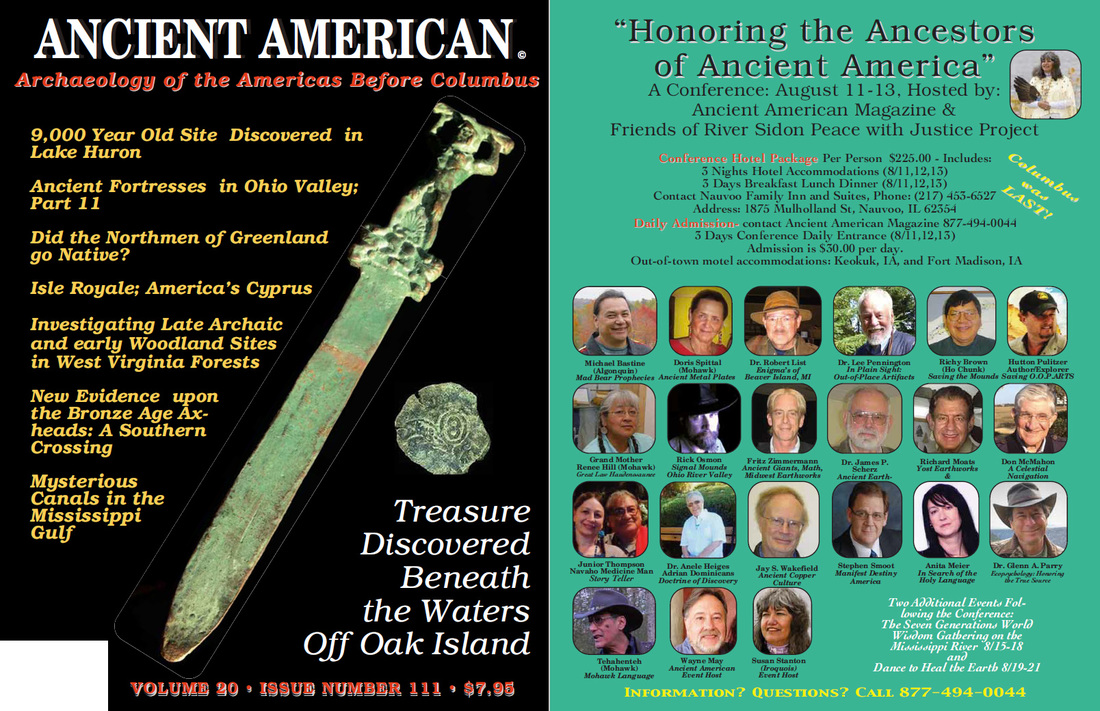



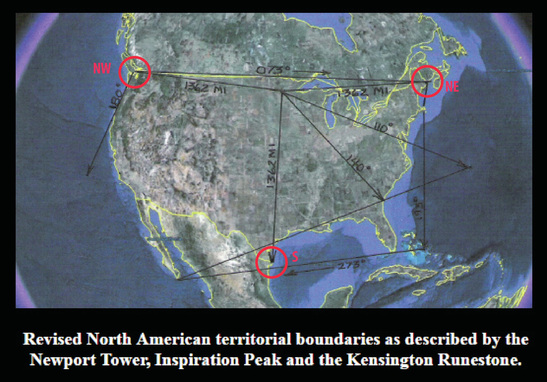


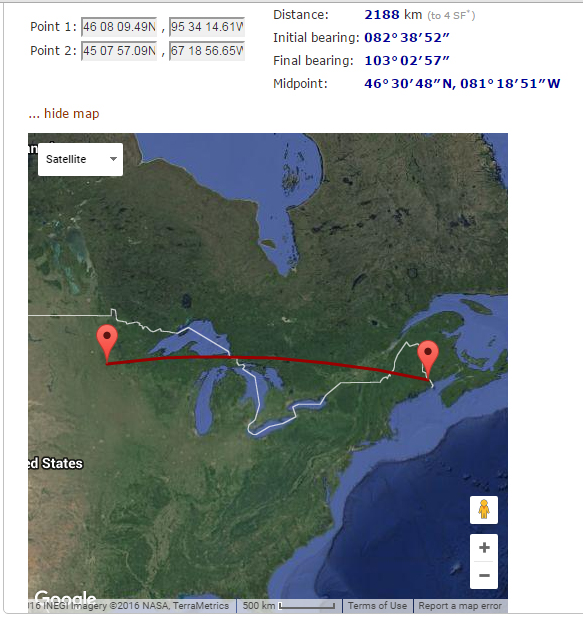
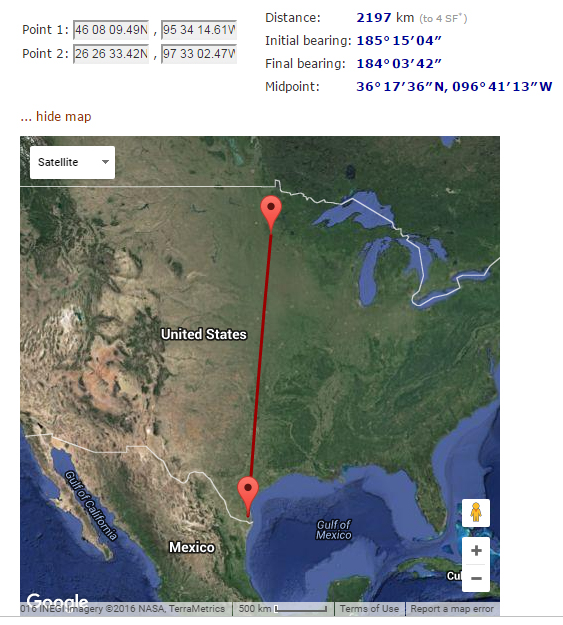
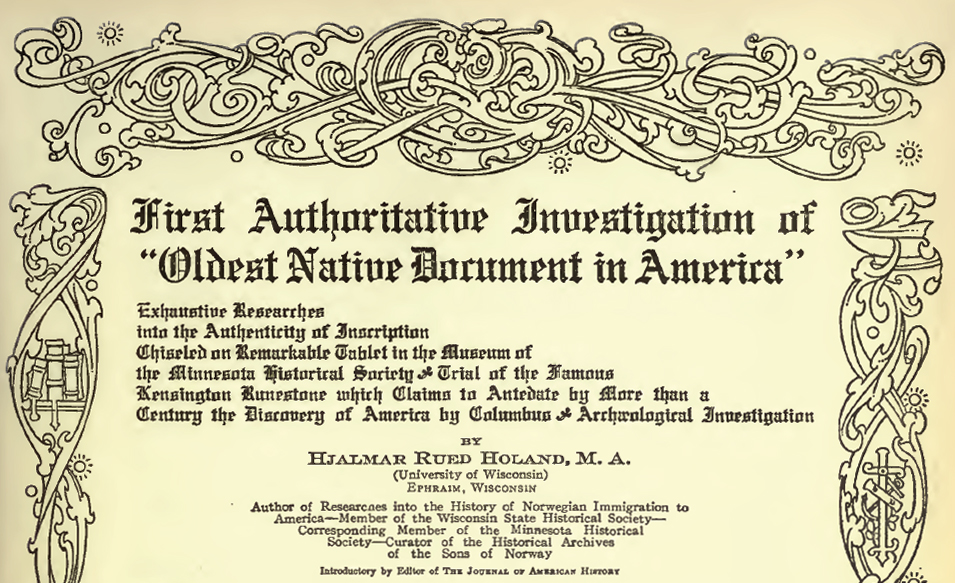
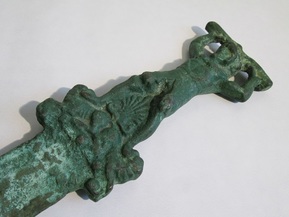
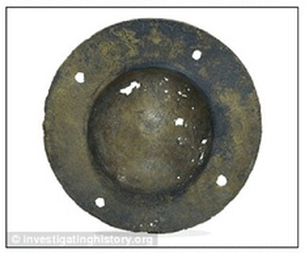
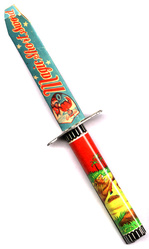
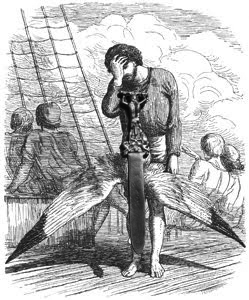
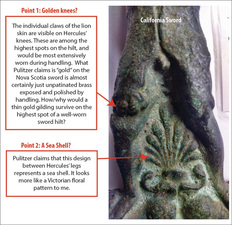
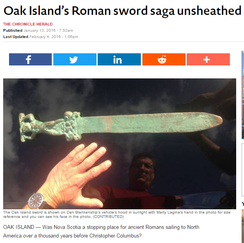




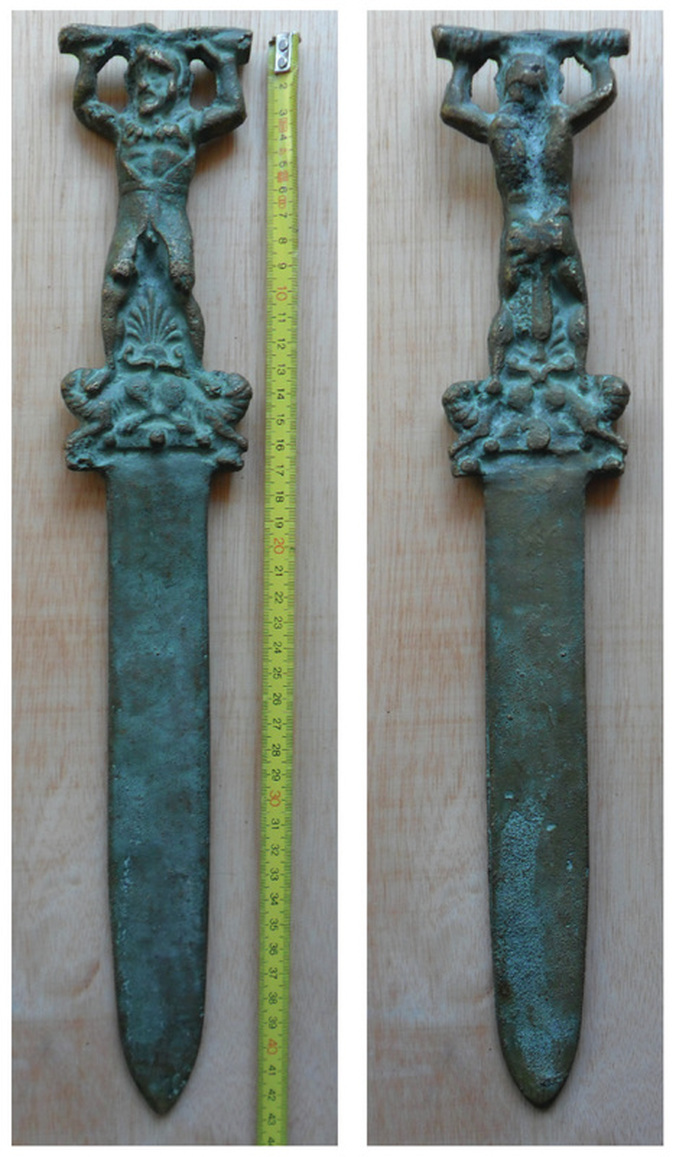
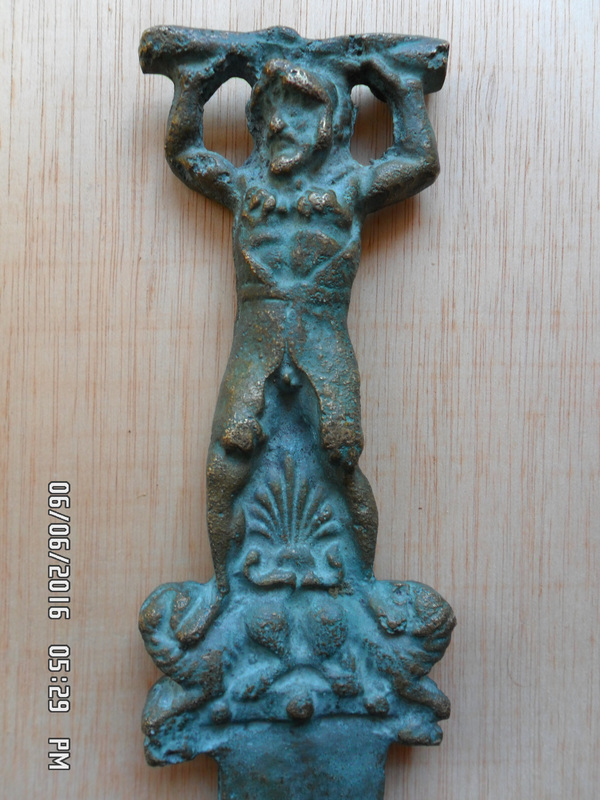
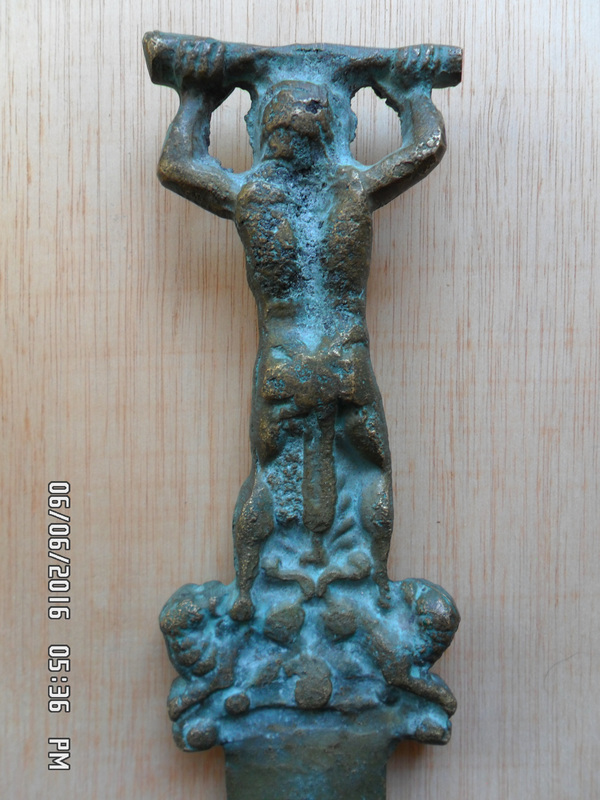
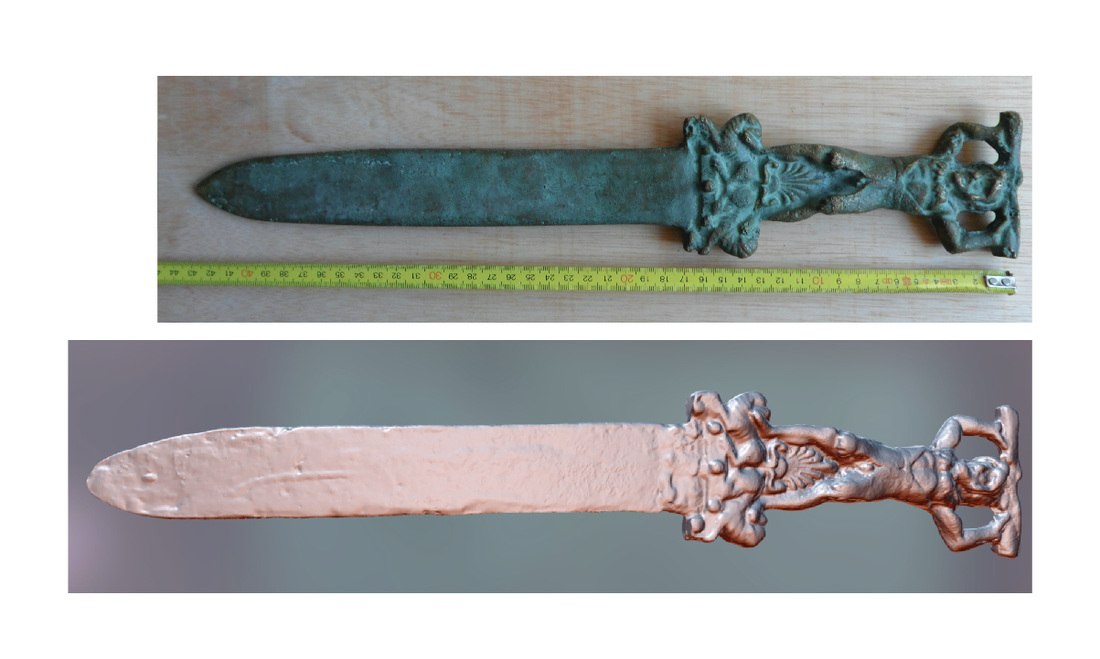




 RSS Feed
RSS Feed
